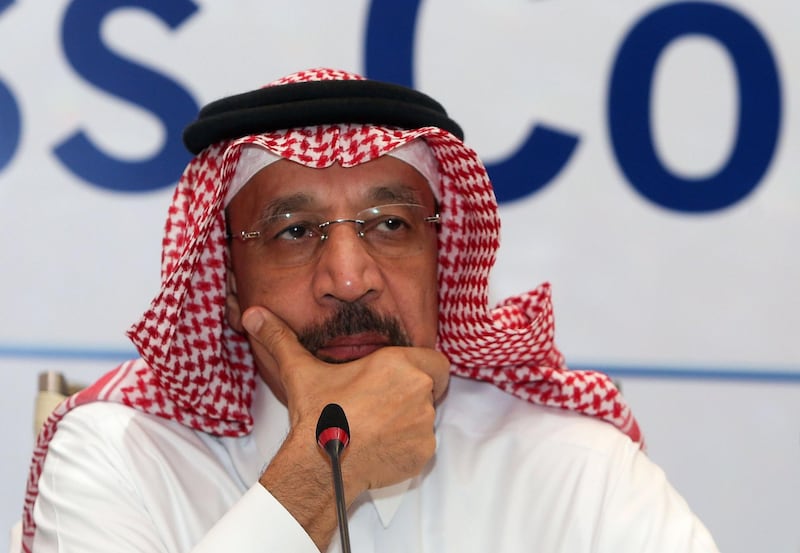With the June Opec Ministerial meeting looming, the question that is making the headlines is whether the Opec and non-Opec producers will start to exit their production agreement due to expire at the end of 2018.
The pact has been successful so far and has stabilised, and indeed firmed oil prices to the advantage of these energy producers and this raises another question on why there is a desire not to renew it? Whatever is finally decided has ramifications well beyond the oil producers and how they exit the agreement is an art as well as a science.
The so-called "Exit Strategy" from the November 2016 Vienna agreement for the 24 Opec and non-Opec oil output cuts is going to be a crucial policy decision that carries far larger implications than just for Saudi Arabia, Russia, or Opec; it will also impact the global economy and the monetary policies of both the European Central Bank and the US Federal Reserve: what would be the impact of another oil price collapse or spike, as opposed to a measured, gradual increase in the price of crude oil that more or less is aligned with a balance between supply and demand?
The world economies, on the brink of a new global trade war, will feel the consequences of oil price volatility, spurring possible economic repercussions just when many countries are beginning to experience those first green shoots of recovery. Getting the exit right is crucial for all sides to avoid another bout of recession or high inflation.
The practicalities and the clear messaging of an exit are very important, with the latter even more so. The fine tuning of a successful exit strategy is also important for the next stage of the energy geopolitical relationship built between Russia and Saudi Arabia and how both sides see the end game of the current Opec plus others' agreement due to expire at the end of 2018.
How will a successful exit mechanism be set in motion, with success defined more broadly to take account of both consumer nations and producer nations agendas? Some analysts see this simply as being a first in – last out type of scenario for the major oil producers like Russia and the Arabian Gulf states, which then allows the smaller fiscally stressed oil producers to start ramping up production. The implication is that the larger producers such as Saudi Arabia and Russia, along with their Gulf allies, will bear the brunt and see their market share eroded as the smaller producers boost output - if the smaller ones have the spare production capacity and can quickly increase pumping. But that is a big "if" as many of these producers have either little spare capacity, are embroiled in civil wars, or are facing sanctions - which limits their investment capabilities in increasing production.
Learning to manage the message to the markets is key. Opec producers and others who have joined the cuts agreement can learn from the experience of central banks in managing their own policy exit strategies.
Indeed, it is striking how much Saudi and other oil policy officials sound like central bankers these days when they talk about "rebalancing" the supply and demand of crude oil or an "equilibrium" price, or as Saudi Energy Minister Khaled Al Falih recently remarked, a willingness to "overshoot" the crude oil equilibrium price for a while. This is very much the language that the US central bank used describing their willingness to tolerate a "temporary" overshoot of the Fed's 2 per cent inflation target, as this was the main target matrix for a successful Fed policy, just like one of Opec’s explicit success target is to ensure that oil prices remain within "reasonable levels" and do not erratically overshoot. Much of the thinking going into devising a successful exit strategy is in fact borrowed straight out of the Federal Reserve playbook for the famous "taper" when it exited its Quantitative Easing (QE3) Large Scale Asset Purchase Programme beginning in 2014. Looking back over that period, the Fed successfully achieved its exit from QE, despite the difficulties of crafting a policy consensus among 19 members of the Federal Open Market Committee who held widely differing views on the economic outlook, the nature of inflation dynamics, and indeed the merits of QE itself.
_______________
Read more:
Saudi Crown Prince: Russia and Opec are considering a 10 to 20-year oil alliance
Putin election win raises questions about future of oil production pact
_______________
As the US central bank found out, its most pressing challenge was in communicating the policy of the taper convincingly to the markets. That was starkly evident in the shock of the so-called "taper tantrum" in the summer of 2013, when the market mistook then chairman Ben Bernanke's mere suggestion that the QE purchases may soon start being wound down in a tapering of the asset purchases. The premature signal sent bond yields by to nearly double their levels, an unintended consequence putting the inflation limiting policy under stress. The Fed learned its lesson - that communications and the "signal" was as important or more so than the actual tapering of the bond purchases - and Opec may do well to heed the same lesson. Unlike the Fed, this will not be as easy for Opec and its allies as it was for the US central bank in having to deal with an internal constituency; there are 23 Opec and non-Opec members to the cuts pact. In reality, however, the majority will go along with whatever is agreed between the two superleaders of the agreement – Saudi Arabia and Russia. How they manage the message becomes doubly important to avoid a divergence of views and cause the markets to start taking positions accordingly. They will have to set the agenda for the others, although there will be detractors - Iran has made some public statements that it wishes to see the pact not renewed at the end of 2018 and wants to pursue a far bigger production level. The continued international sanctions and reluctance of major firms to invest in Iran will ensure that the Iranian capacity to increase production is limited. Some analysts take the view that one of the factors that have had a stabilising effect on current high oil prices is the erratic production levels from countries such as Venezuela, Nigeria and also Iraq and that monitoring global inventories is only part of the equation, as by Opec’s own admission the desired five-year average inventory level has not yet been reached.
The final outcome is that the Opec and non-Opec oil producing countries, led by Saudi Arabia and Russia, will approach the end of the current output agreement gingerly. Any tapering of the output cuts, essentially a reverse taper, is likely to come only after a long period of messaging its framework and some of its operational details to ensure as smooth an effect on crude prices as possible.
Some ideas are already being floated on whether a longer, seven-year inventory stock should be taken instead of the current five-year average, and also on whether to widen the inventory stockpile to global stocks instead of those held by the OECD countries and reported by the International Energy Agency. But the patchy nature of data outside the OECD will make it more difficult to get an accurate global picture of the entire world market. The messaging process has to start from now and this will continue at the forthcoming producers technical committee meeting to be held in Jeddah in April and the exit scenarios at the full ministerial 2018 June Opec meeting to begin shaping the internal consensus.
This needs to be followed by several months of preparing the markets, and perhaps its formal adoption at the November Opec ministerial meeting for a taper that begins in 2019. If this happens without discordant voices and conflicting messages from the key players, then whatever is finally decided will have been factored in by the markets and will not come as a surprise when the decision is finally made as the message will have become “real – past".
The latest statement by the Saudi Crown Prince that the kingdom is looking to a 10 or 20-year agreement with Russia on the energy front has taken many by surprise. The mere fact that Saudi Arabia has already started to send out and manage this important message to the markets that the current pact should not be viewed as a short-term one-off deal but, rather to establish a longer-term structure to balance world energy markets is a welcome development to ease market concerns.
Dr Mohamed Ramady is an energy economist and geopolitical expert on the GCC and former Professor at King Fahd University of Petroleum and Minerals, Dhahran, Saudi Arabia and co author of "OPEC in a Post shale world – where to next?" His latest book is titled "Saudi Aramco 2030: Post IPO challenges".





